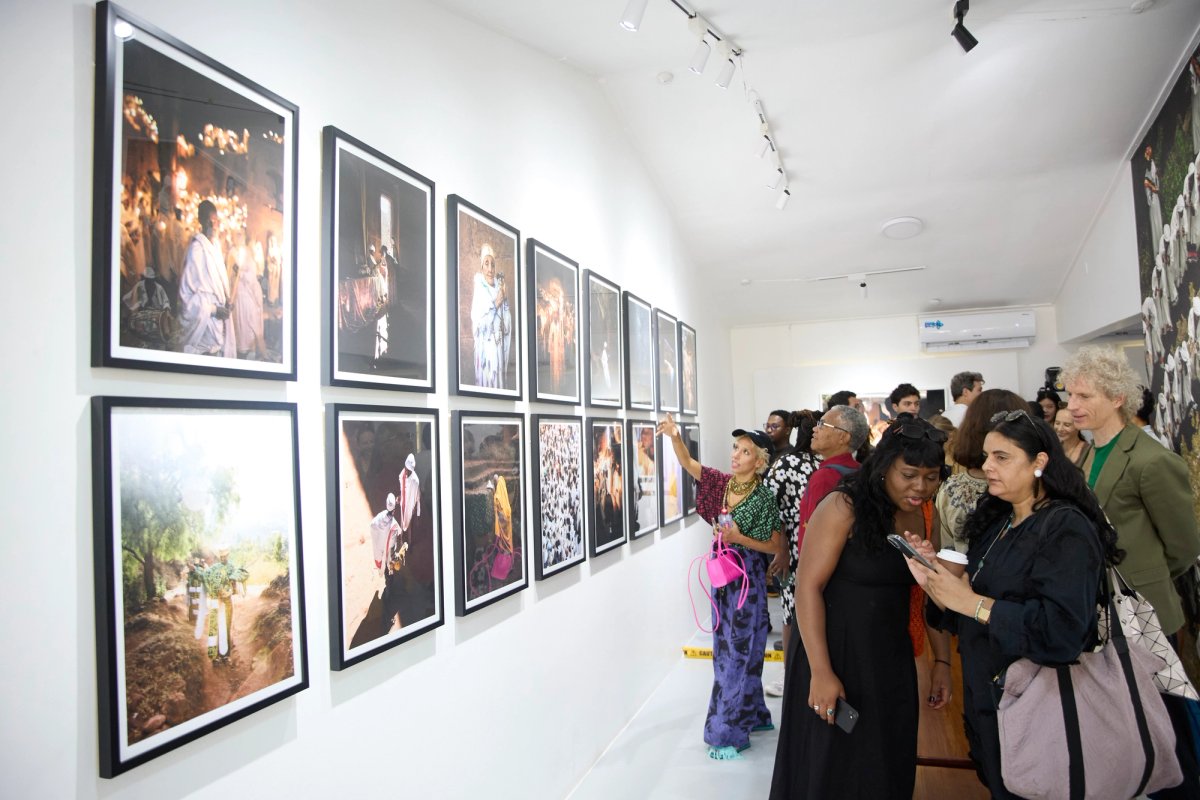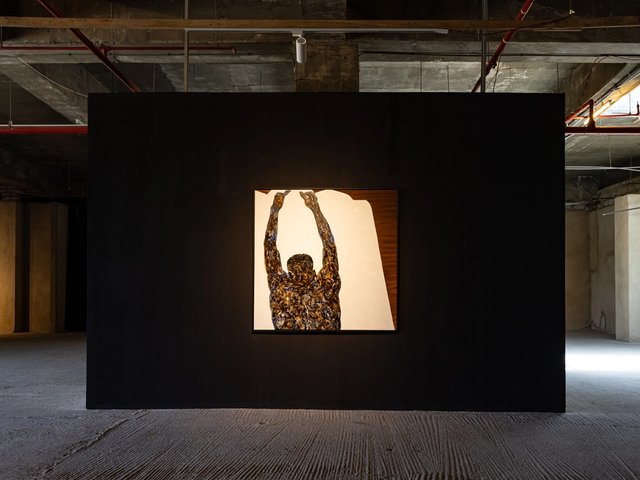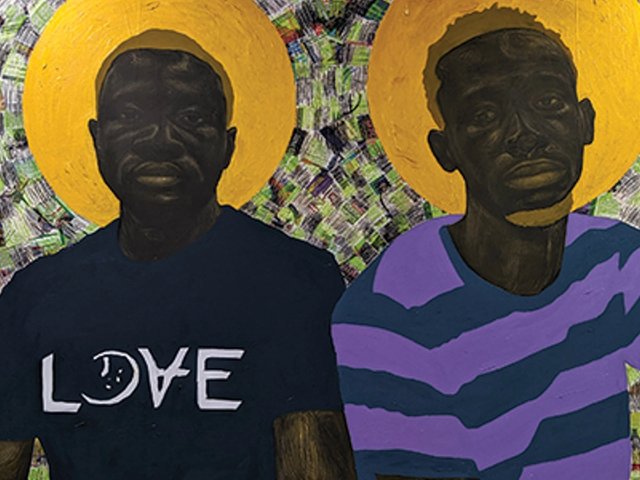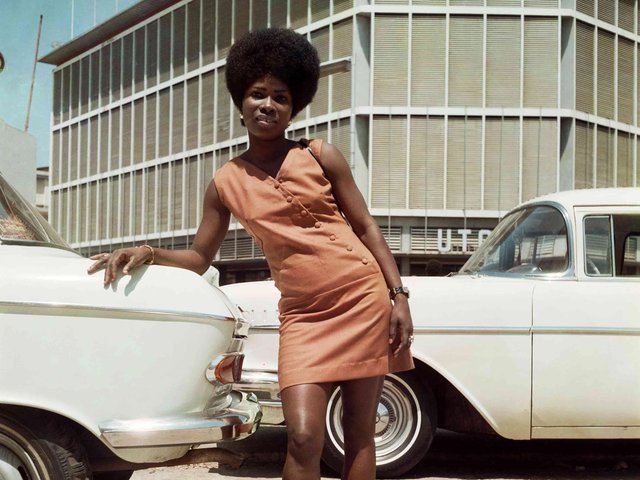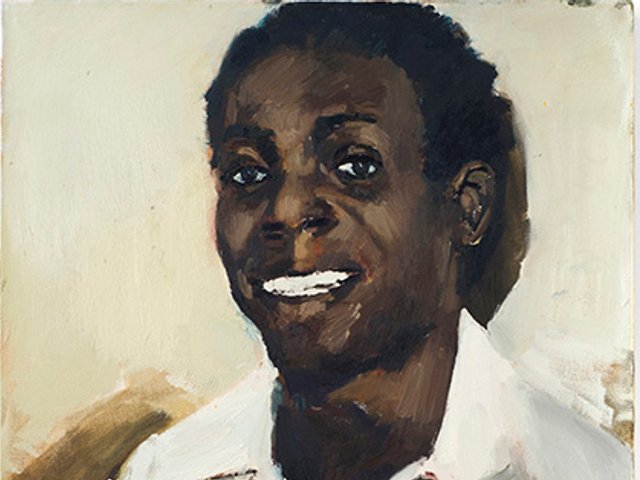“It’s no longer the fact that Ghana is an emerging talent. It has arrived,” says the dealer Marwan Zakhem of the country’s art scene. “It’s still in its nascent stage, of course, because there are so many great, talented artists that are coming to the fore, but still as we speak right now, I think if you ask anyone in the international art world, they will say that definitely Ghana is one of the key players.”
There is a lot of evidence to back this statement. In October, the Ghanaian artist—and current art world darling—Amoako Boafo’s first museum exhibition in Europe opened at The Belvedere in Vienna. A host of other Ghanaian artists, including El Anatsui, Ablade Glover, Serge Attukwei Clottey, Gideon Appah and Ibrahim Mahama, have also had solo shows at notable international locations this year, or have one coming up.
In late October, some 200 collectors, artists, curators, art fair directors, museum directors, patrons and more were in Ghana for several days. These figures—who included representatives of leading institutions such as London’s Tate and the Victoria and Albert Museum, Sotheby’s auction house and 1:54 Contemporary African Art Fair—were in the West African country for the third annual Accra Cultural Week, an initiative of Accra- and London-based Gallery 1957. As part of the event, they were immersed in the country’s art scene, taking guided tours of artist studios, galleries, cultural sites and institutions, in Accra, Cape Coast and Tamale in the north.
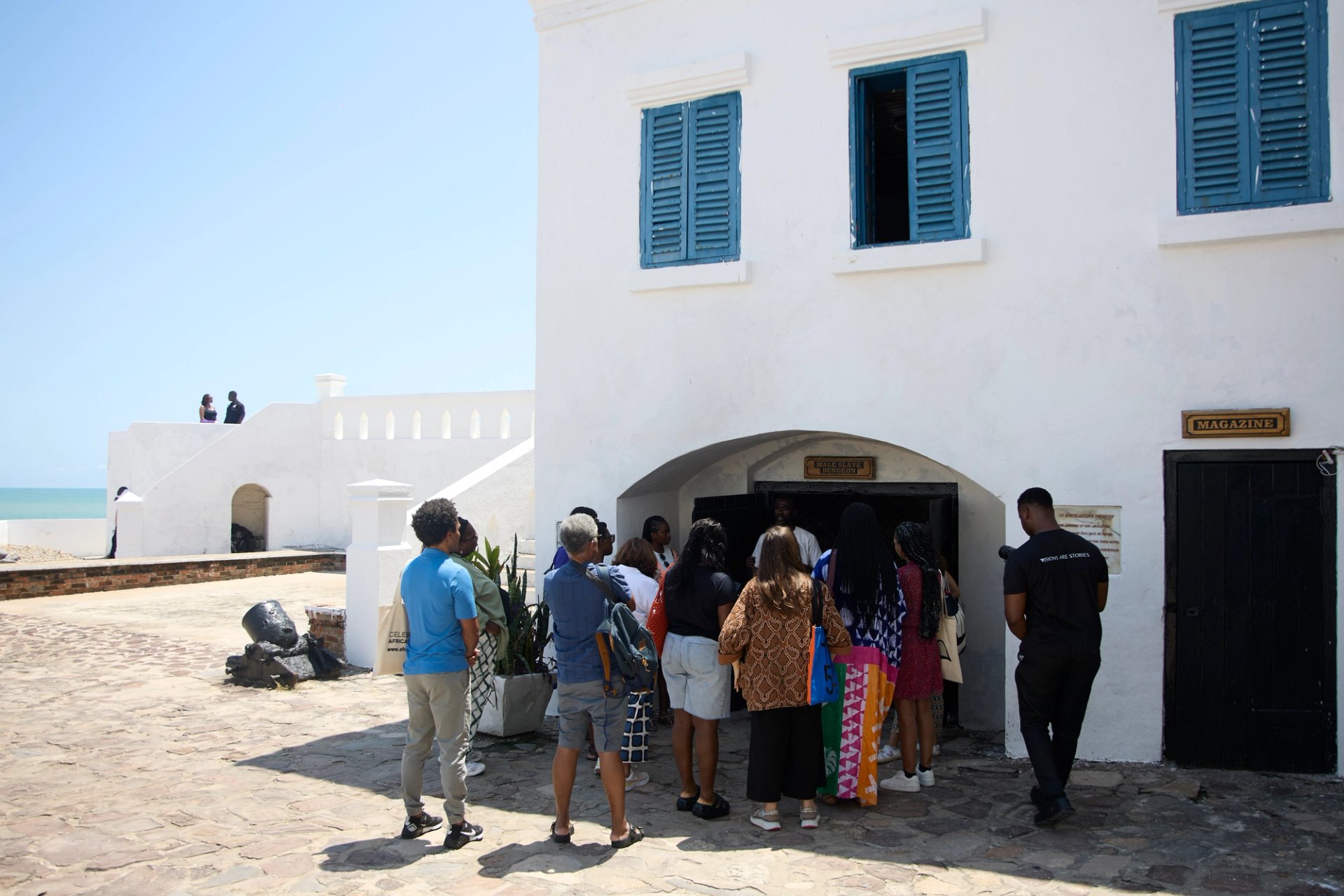
Guests visit Cape Coast Castle in the Ghana’s Central Region, a former ”slave castle”—a coastal fort used in the trans-Atlantic slave trade
Photo: Nii Odzenma. Courtesy of Gallery 1957
These visits, Gallery 1957’s founder Marwan Zakhem—a Lebanese-born construction magnate—tells The Art Newspaper, generate an extraordinary amount of attention on the country, leading to the work of artists being “documented, exposed and collected”. This growing awareness and interest has led to a “sustainable” platform being created for the country’s arts ecosystem. That, in turn, contributes to Ghana playing an important role on the international level, Zakhen says, something he is “very proud of.”
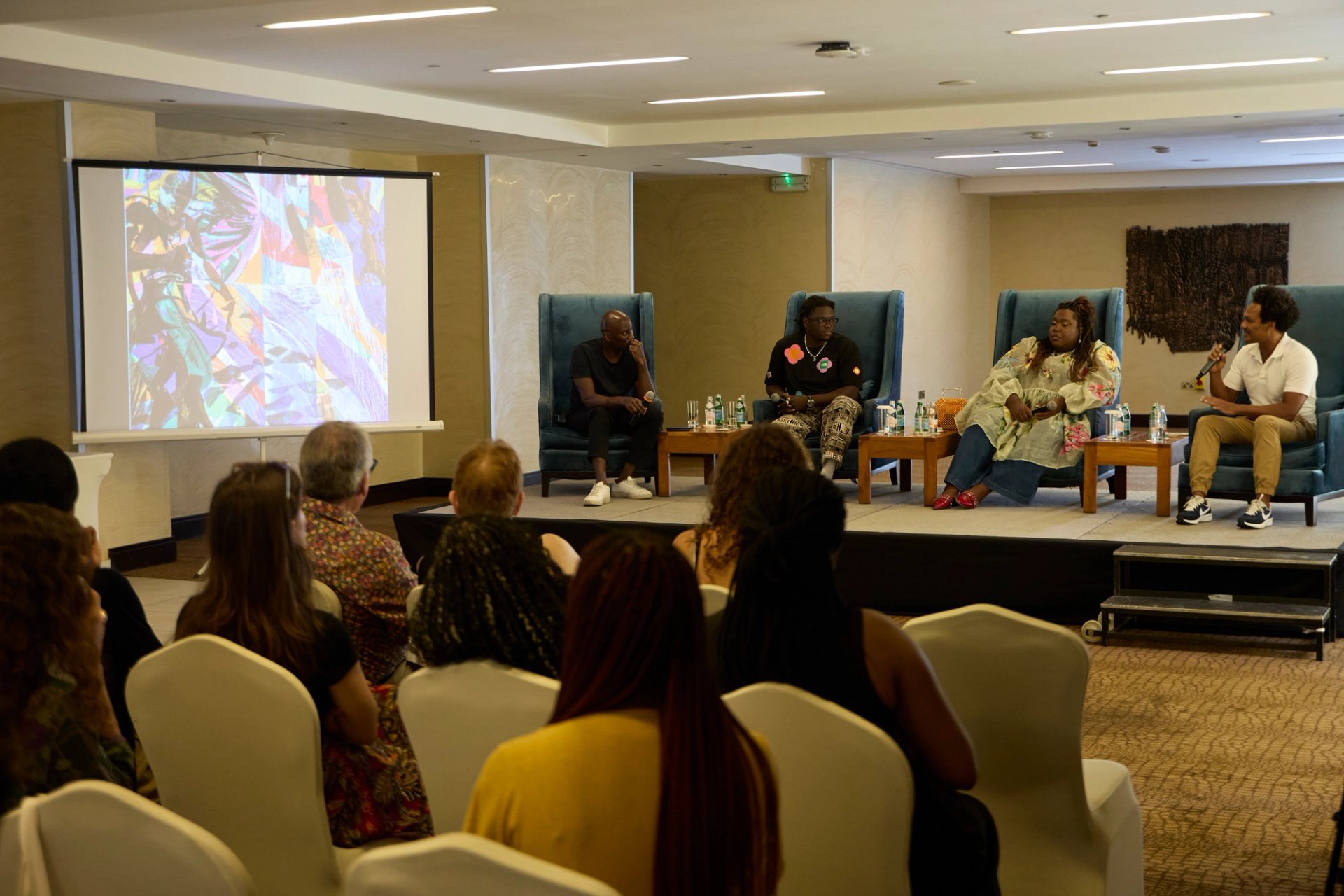
An Accra Cultural Week artist talk hosted by the curator Ekow Eshun (further left on stage). On the panel (left to right beside Eshun) are the artists Julianknxx, Michaela Yearwood-Dan and Che Lovelace
Photo: Nii Odzenma. Courtesy of Gallery 1957
“It’s undeniable and very hard to put into words how much of an impact it's had,” Zakhem says of the Cultural Week. “But for sure I think it is a fundamental pillar in why we have been able to succeed in growing this ecosystem in Ghana.”
A landmark show
The week also included artist talks and the launch of new exhibitions, with a highlight being Keeping Time, curated by Ekow Eshun and Karon Hepburn. The show—which is billed as a sequel to Gallery 1957’s 2023 show In and Out of Time, organised by Eshun—explores ideas of time through the lens of the African diaspora. It challenges the imposition of experiencing time in the context of the Western imagination, which positions the West as a symbol of modernity and the future while suggesting that Africa and its diaspora are “uncivilised” and “stuck in the past”. Works by international and Ghana-based artists including Boafo, Elias Sime, Julianknxx, ruby Onyinyechi Amanze, Ibrahim El-Salahi and Michaela Yearwood-Dan bring alternative perceptions and interpretations of time to the fore.
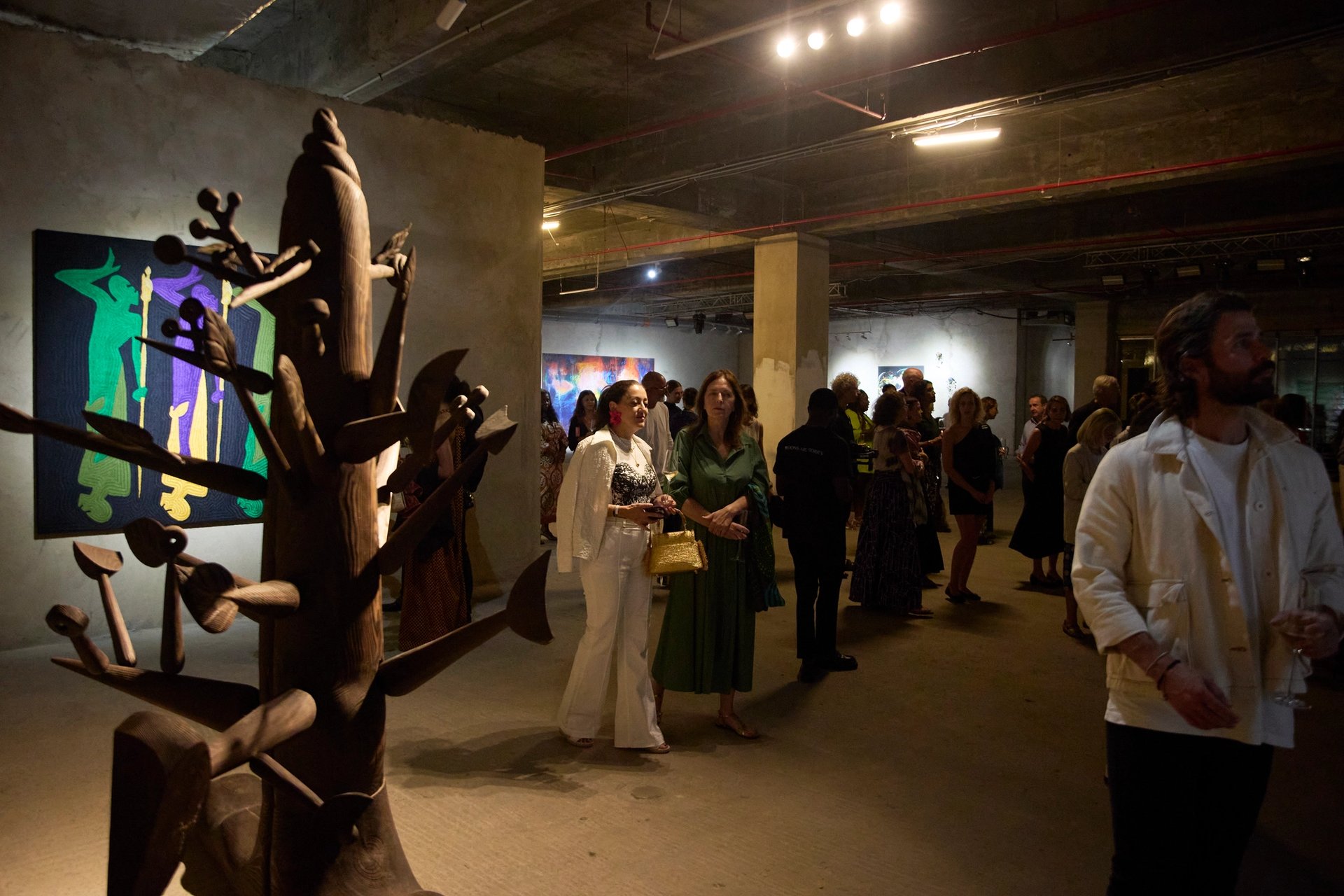
Visitors at the opening of Keeping Time, curated by Ekow Eshun and Karon Hepburn at Gallery 1957
Photo: Nii Odzenma. Courtesy of Gallery 1957
“On one hand, the show is about trying to explore, think and look beyond Western notions of time,” Eshun says. “On another, it's about these artists who are to some extent engaged in those forms of inquiry, as well as all the other things they do within their work.”
A growing gallery circuit
In addition to Gallery 1957, considered the leading contemporary gallery in Ghana, there are about two dozen other galleries in the country—with the number rising considerably in the past five years. The boom is good for the country’s art scene because it creates “new opportunities to discover emerging artists,” says Barbara Janvier, the founder of Gallery Soview, which bridges the artistic and language barrier between English and French-speaking artists from West Africa. The phenomenon, she adds, “is enriching, and diversifies the offering for local collectors.”
Another essential Ghanaian gallery is Compound House, founded by Nuna Adisenu-Doe. He is interested, he says, in “experimental practices” and “artists whose work would not ideally fit within the context of what galleries might show”. He says he is excited about the increase in galleries as it “opens up the conversation [and] increases exposure to a wider audience”.
This past June, his gallery organised a solo exhibition for Jojo Abdallah at the National Museum of Ghana in Accra. The artist has been actively working from his studio at the occupational therapy department at the Accra Psychiatric Hospital for more than 20 years, since being diagnosed with schizophrenia.
The show, curated by the Ghana-based artist Robin Riskin, has since toured to Tamale, to Red Clay Studio (until March 2025), the studio of Ghanaian artist Ibrahim Mahama which also operates as an arts space. “Bringing [the show] to Tamale is also a way to connect to a larger audience [and create] an awareness around what mental health looks like for [Abdallah],” explains Adisenu-Doe, adding that it also makes it accessible to a lot more people.
As the number of galleries have grown so has amount of people visiting them, including a notable increase in people under the age of 30, says Janvier. Eshun adds that he’s “always struck” by the hundreds of people who attend exhibition openings he’s involved in. Not only that, he continues, the visitors actively engage with and talk about the work on view.
While this hasn’t necessarily translated—yet—into a significant increase in sales or local collectors, what it has done, according to general sentiment, is help to develop a strong, broader local scene and also create conversations about possibilities and the worth of art. This, in turn, is seen as contributing to a shift away from the belief among Ghanaians that the creative arts is not viable career path.
Several internationally recognised Ghanaian artists have leveraged their success to provide support for emerging artists in the country. These include Boafo and Kwesi Botchway, who have launched Dot Ateliers—a non-commercial artist residency, exhibition venue and foundation—and Worldfaze Studio and Residency, respectively. Additionally, local collectors and patrons are investing in various initiatives, including spaces for the long-term benefit of artists and the country’s art scene. This evolution ties in with broader developments in West Africa’s cultural landscape, including the recent opening of the Museum of West Africa Art in Benin City and the continuing expansion and influence of the art fair Art x Lagos.
The time international visitors spent in Ghana also, clearly, resonated, with conversations on the ground supporting Zakhem’s assertions.
“It [was] incredible to spend time in [Ghana],” shares Gregor Muir, the international collection director at Tate. His experiences in the country, he adds, is “yet another indication of the significance of Ghana’s growing art scene”.


